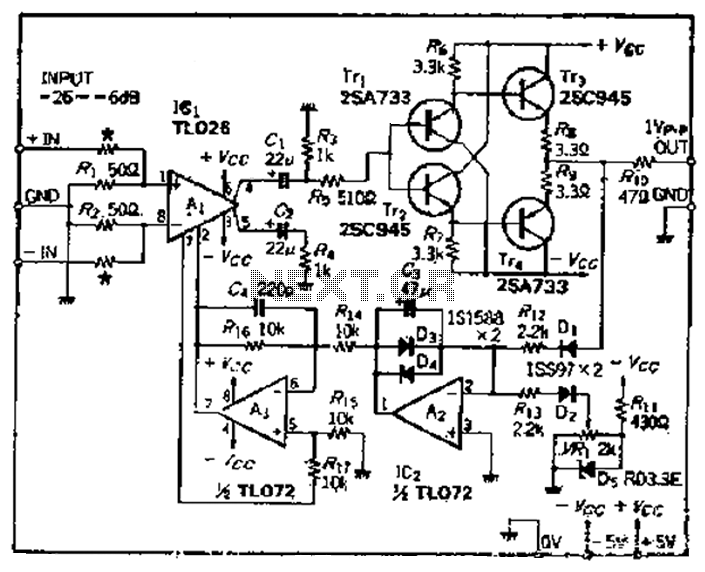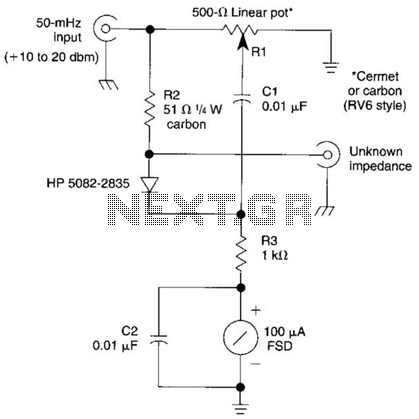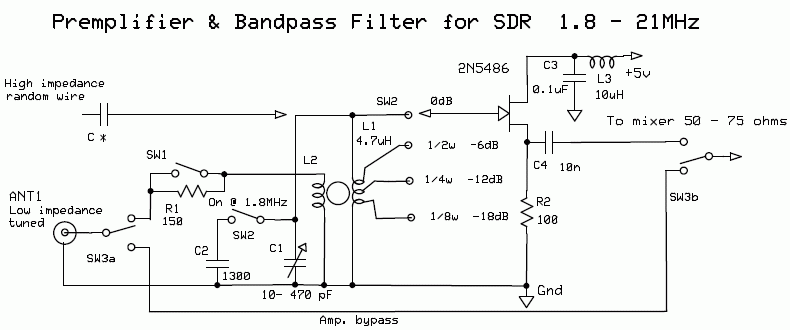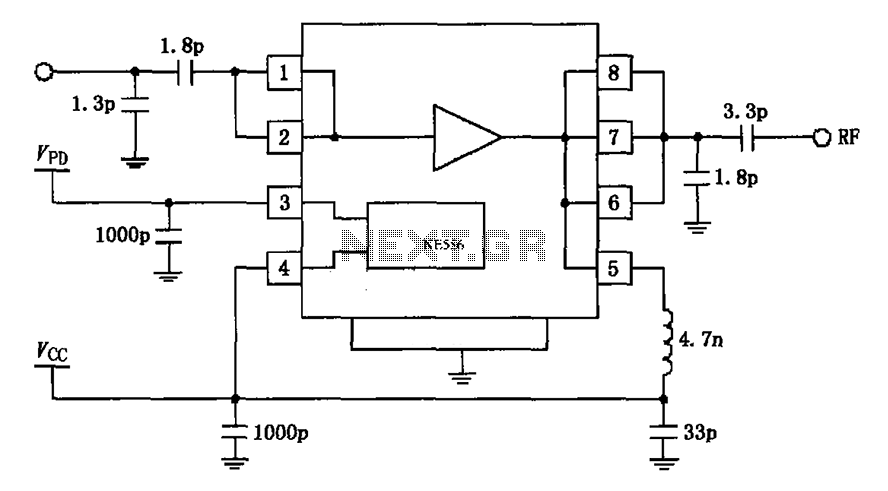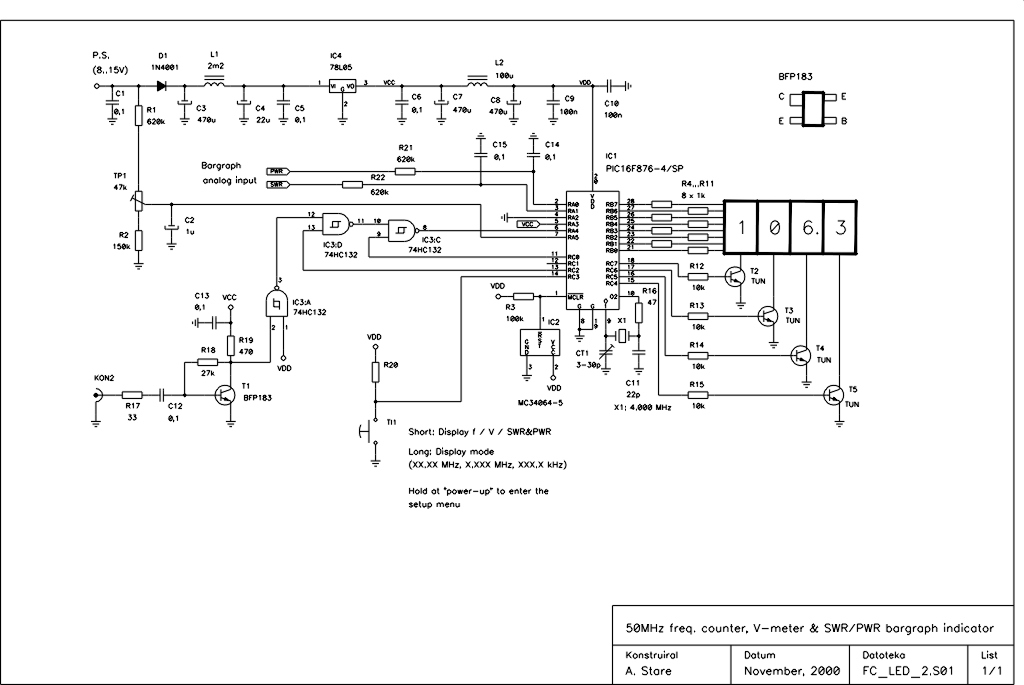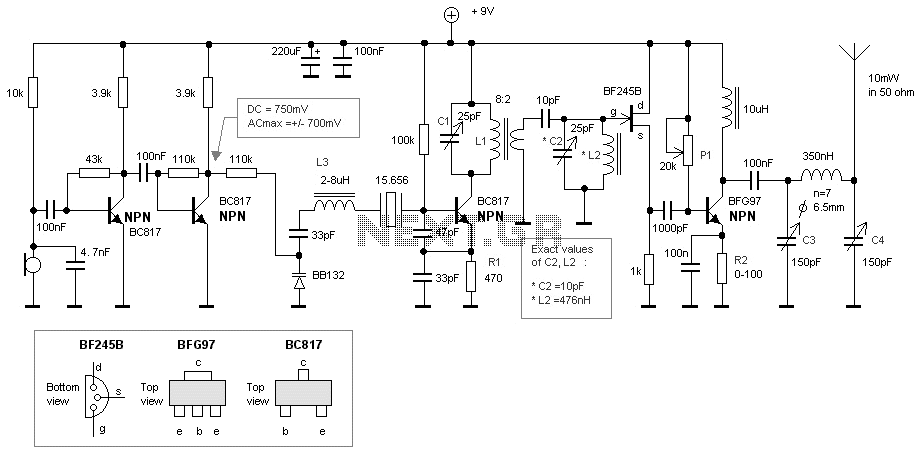
SDR TX 50MHz
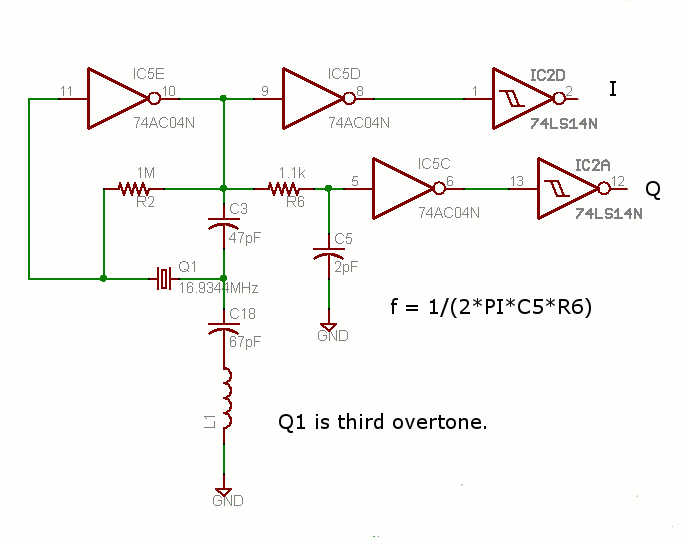
A 90-degree phase shift can be achieved in VHF applications using an IQ oscillator that employs two logic integrated circuits (ICs). The 74AC04 inverter serves as the oscillating circuit, while components C5 and R6 function as the phase shifter. The 74HC14 is responsible for converting the output into a square wave. Typically, the 74HCU04 is utilized in crystal oscillator circuits. However, the buffer of the 74AC04 may introduce parasitic oscillations, leading to suboptimal performance, prompting initial testing with the 74HCU04, which did not yield satisfactory results.
The described circuit utilizes a 74AC04 inverter to generate an oscillating signal, which is crucial for achieving the desired 90-degree phase shift in VHF applications. The oscillator configuration is essential for creating a stable frequency output, where the inverter's characteristics contribute to the overall performance of the circuit. The phase shifter, composed of capacitor C5 and resistor R6, plays a pivotal role in adjusting the phase of the output signal to meet the specific requirements of the application.
To further enhance the signal, the 74HC14 is employed to convert the oscillating signal from the inverter into a square wave form. The square wave output is often preferred in digital applications due to its sharp transitions and well-defined amplitude levels, which are conducive to driving subsequent stages of a circuit with minimal distortion.
The use of the 74HCU04 in crystal oscillator circuits is common due to its ability to provide stable oscillation characteristics. However, in this instance, the 74AC04's buffer stage was found to induce parasitic oscillations that negatively impacted the circuit's performance. This observation highlights the importance of carefully selecting components based on their characteristics and interactions within the circuit.
In summary, the combination of the 74AC04 inverter, phase shifter components, and the 74HC14 provides a straightforward approach to achieving a 90-degree phase shift in VHF applications. However, careful consideration must be given to the potential for parasitic oscillations when utilizing different logic families, as evidenced by the initial testing with the 74HCU04. Proper design practices and component selection are critical for optimizing performance in such oscillator circuits.Making 90 degree phase shift on VHF. This IQ Oscillator is easy way with two logic IC`s. 74AC04 inverter is used as oscillate circuit. C5 and R6 is phase shifter. 74HC14 has a duty to convert into square-wave. It is usualy used 74HCU04 in crystal oscillator circuit. Buffer of 74AC04 cause parasitic oscillation. So I teste d with 74HCU04 first, but the result was not good for me. 🔗 External reference
The described circuit utilizes a 74AC04 inverter to generate an oscillating signal, which is crucial for achieving the desired 90-degree phase shift in VHF applications. The oscillator configuration is essential for creating a stable frequency output, where the inverter's characteristics contribute to the overall performance of the circuit. The phase shifter, composed of capacitor C5 and resistor R6, plays a pivotal role in adjusting the phase of the output signal to meet the specific requirements of the application.
To further enhance the signal, the 74HC14 is employed to convert the oscillating signal from the inverter into a square wave form. The square wave output is often preferred in digital applications due to its sharp transitions and well-defined amplitude levels, which are conducive to driving subsequent stages of a circuit with minimal distortion.
The use of the 74HCU04 in crystal oscillator circuits is common due to its ability to provide stable oscillation characteristics. However, in this instance, the 74AC04's buffer stage was found to induce parasitic oscillations that negatively impacted the circuit's performance. This observation highlights the importance of carefully selecting components based on their characteristics and interactions within the circuit.
In summary, the combination of the 74AC04 inverter, phase shifter components, and the 74HC14 provides a straightforward approach to achieving a 90-degree phase shift in VHF applications. However, careful consideration must be given to the potential for parasitic oscillations when utilizing different logic families, as evidenced by the initial testing with the 74HCU04. Proper design practices and component selection are critical for optimizing performance in such oscillator circuits.Making 90 degree phase shift on VHF. This IQ Oscillator is easy way with two logic IC`s. 74AC04 inverter is used as oscillate circuit. C5 and R6 is phase shifter. 74HC14 has a duty to convert into square-wave. It is usualy used 74HCU04 in crystal oscillator circuit. Buffer of 74AC04 cause parasitic oscillation. So I teste d with 74HCU04 first, but the result was not good for me. 🔗 External reference
Warning: include(partials/cookie-banner.php): Failed to open stream: Permission denied in /var/www/html/nextgr/view-circuit.php on line 713
Warning: include(): Failed opening 'partials/cookie-banner.php' for inclusion (include_path='.:/usr/share/php') in /var/www/html/nextgr/view-circuit.php on line 713
